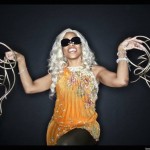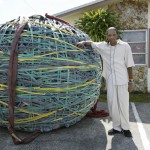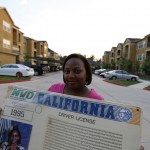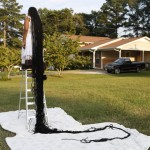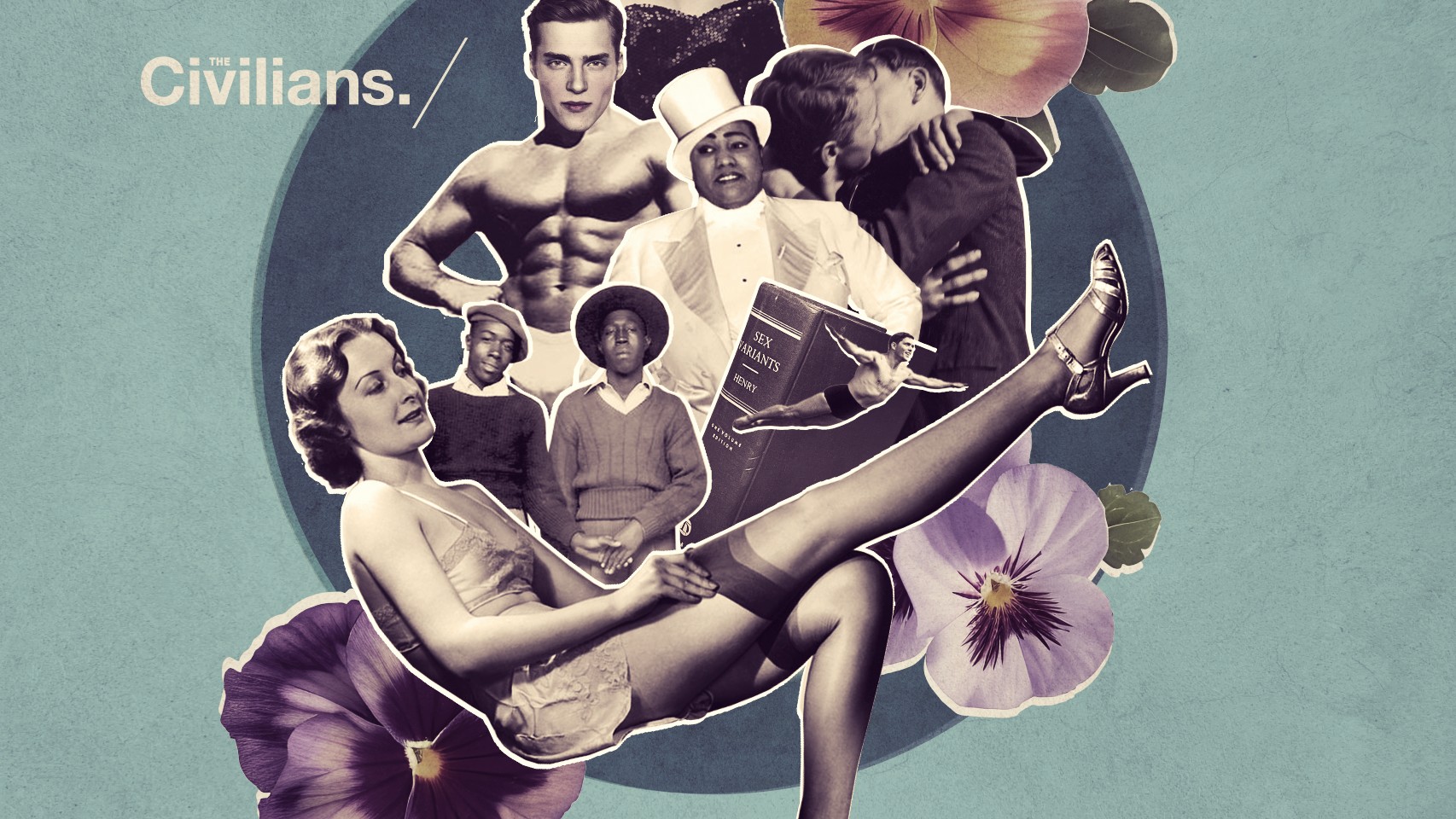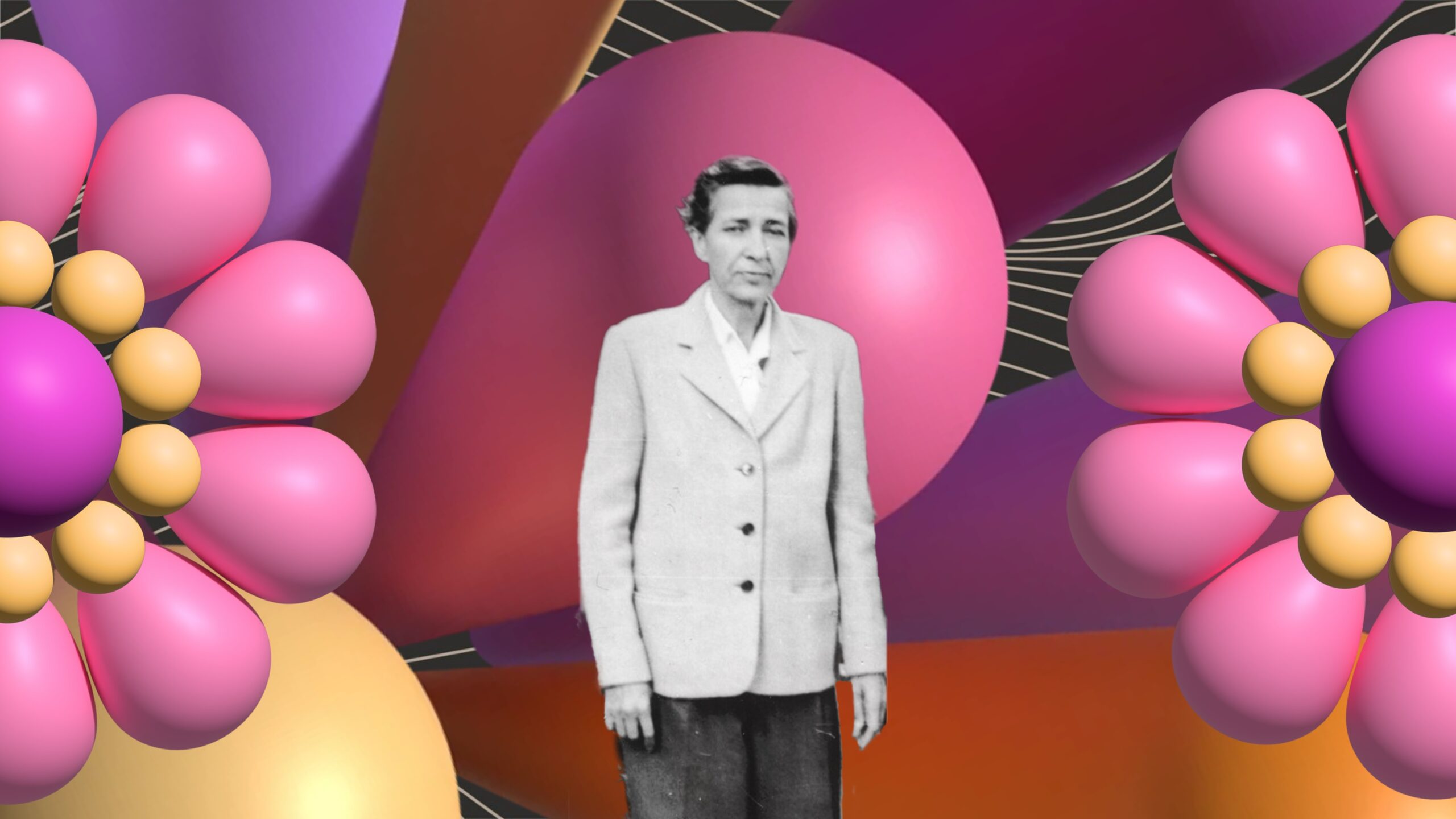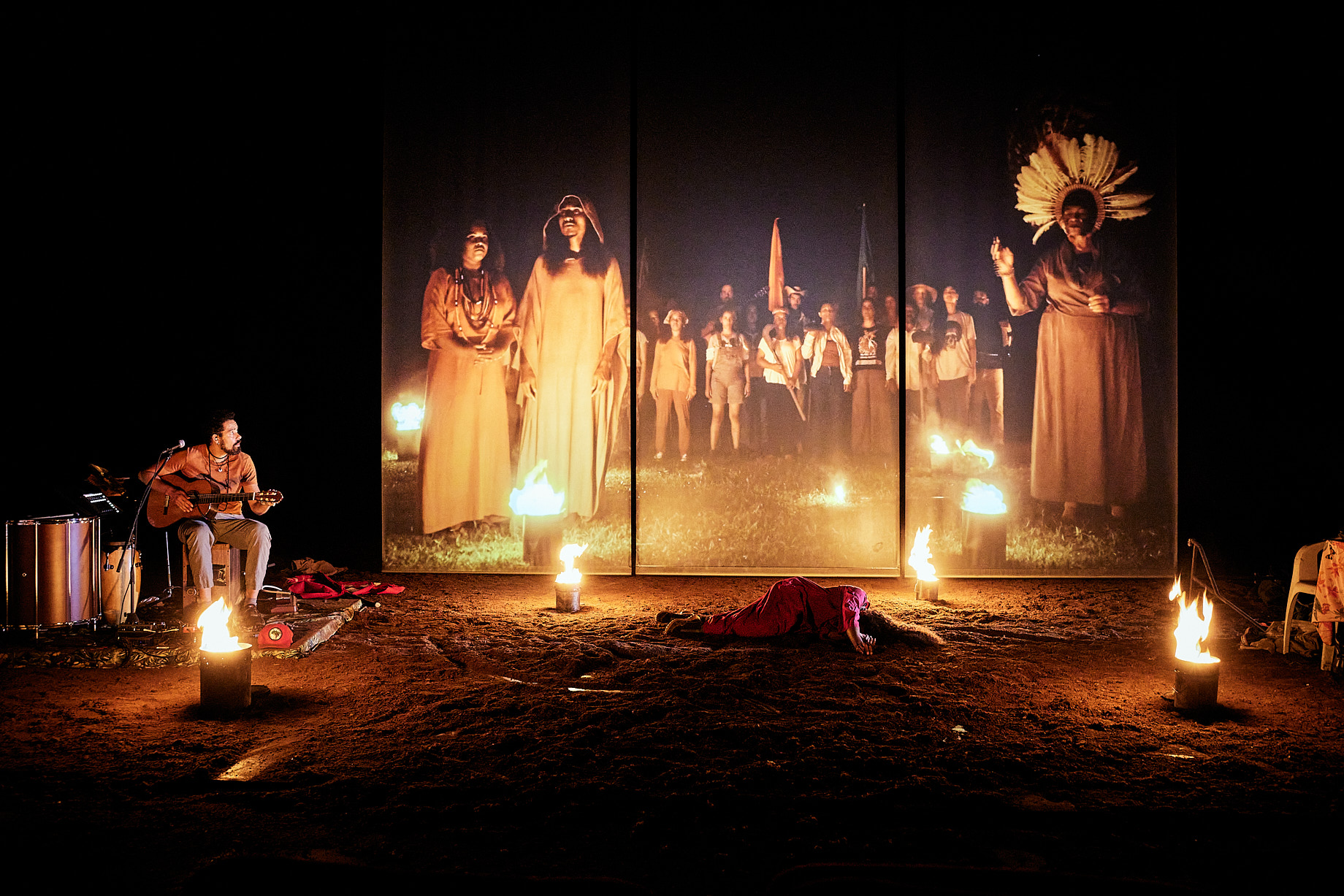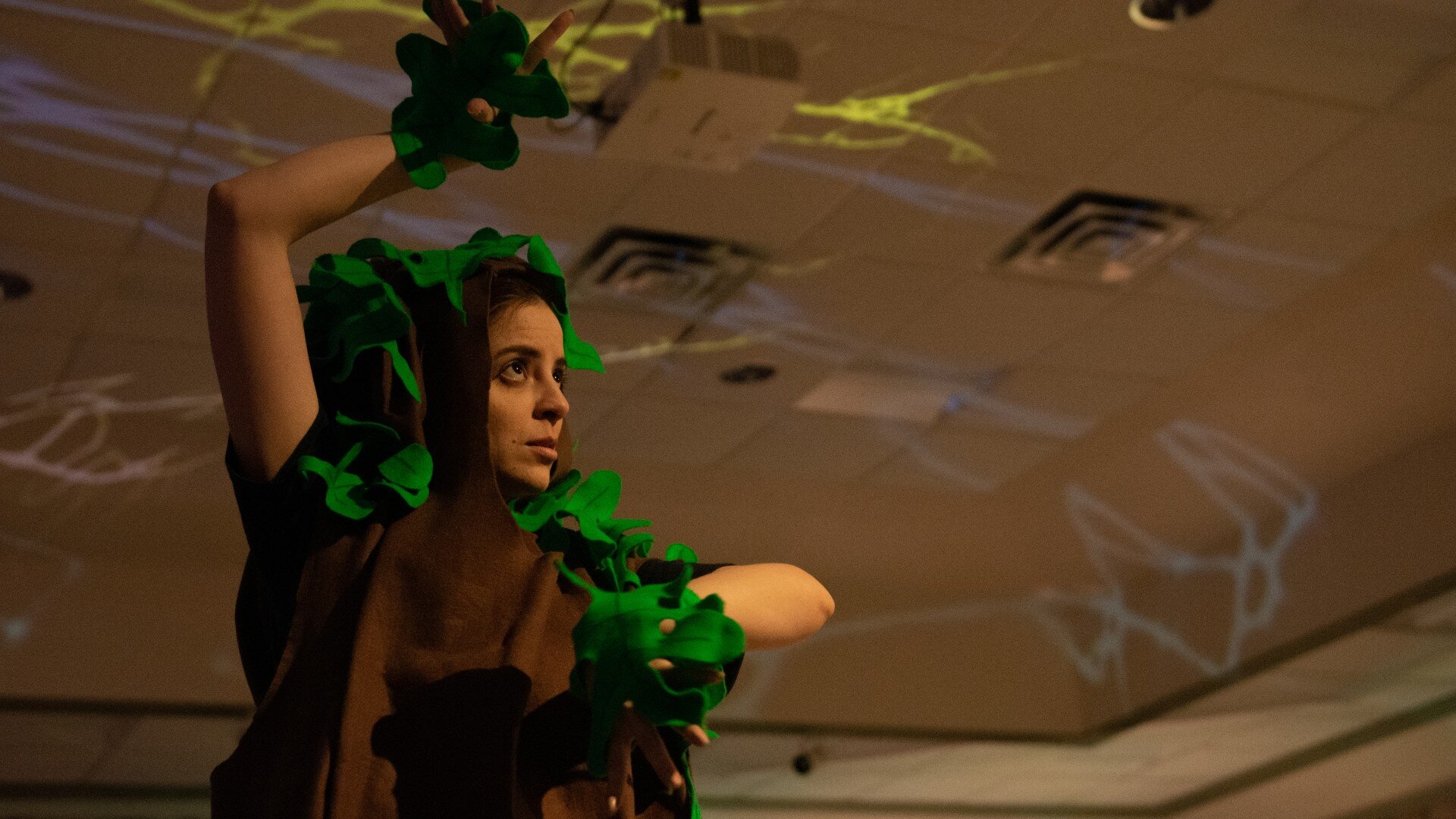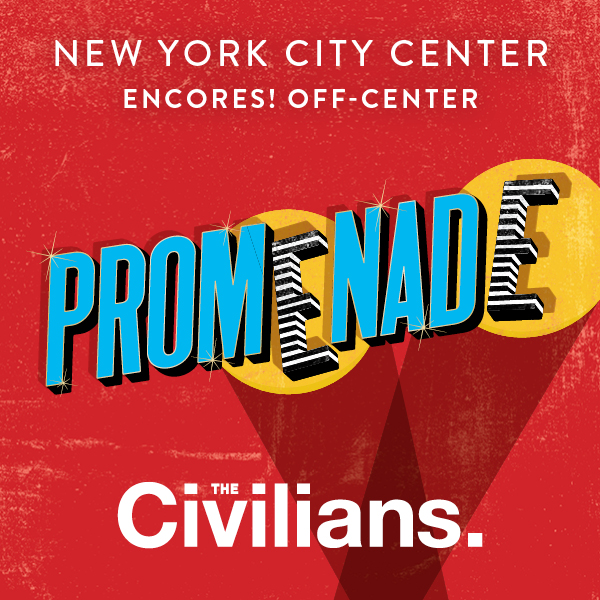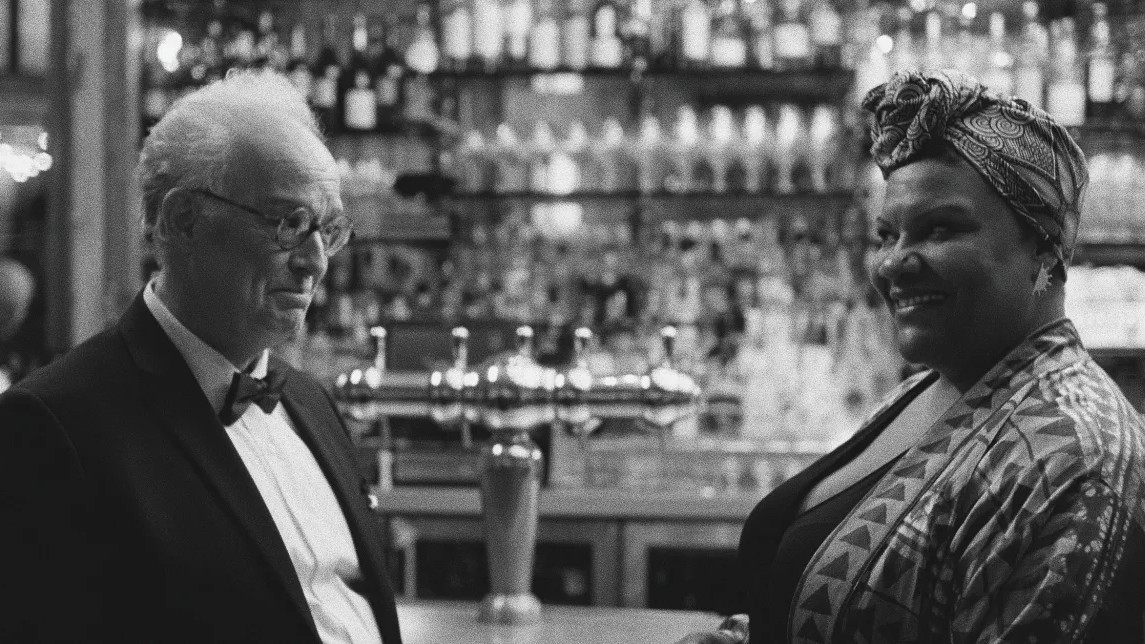Filmmaker Sam Green has made several traditional documentaries, perhaps most famously “The Weather Underground,” which was nominated for an Academy Award and included in the Whitney Biennial in 2004. In 2010, Green began marrying cinema and performance to create a multimedia experience he describes as “live documentary.” In front of an audience, Green combines his live narration, photo and video projections, and a live band, in hopes of elevating the documentary form to what he calls, “a total arts spectacle.” His first endeavors in this form were 2010’s “Utopia in Four Movements” and 2012’s “The Love Song of R. Buckminster Fuller.”
His latest live documentary project, “The Measure of All Things,” has been performed at the Sundance Film Festival and the Kitchen in New York City. Inspired by an old copy of “The Guinness Book of World Records,” the piece moves through stories of extreme human achievements and attributes like the man who has been struck by lightening the most times (seven), the oldest living person (age 117), and the oldest living organism (a pine tree in Southern California). The film is on tour now around the United States and England through June 28.
Extended Play’s Ian Daniel talked with Green about his investigative work, creative process, and how R. Kelly’s “Trapped in the Closet” inspired him to pioneer this new genre of documentary performance.
IAN DANIEL: I had the pleasure of seeing two of your performances at the Kitchen, “Utopia in Four Movements” and, more recently, “The Measure of All Things.” To me, there were themes that connected the two; fear of death, fate, hope, connecting to something greater than ourselves. Do you start these projects with a theme in mind? What are you looking at or looking for when you’re thinking about your next project?
“It’s a piece about time and fate and weird things we’re compelled to do — things we don’t even understand why we’re compelled to do them. The odd things that happen to people — the odd and tragic things.”
SAM GREEN: I never sit down and say, “I’m going to do a documentary about hockey or the world’s largest shopping mall.” I sometimes wish I was that deliberate. I’m always reading and looking around and curious, and then things resonate with me…stick under my skin. And sometimes that develops into something, and sometimes it doesn’t. In some sense it’s more of an intuitive process. I don’t always understand what it’s about. Later, sometimes, I can look back and say, “Oh that’s why.” Often doing the whole project, at the end you understand why you were so obsessed with it to begin with. So it’s a little hard to talk about the ideas of my work or the themes. “Utopia in Four Movements” is about hope and trying to understand why we live in this time of very little imagination about the future. By understanding how we got here, trying to figure out a way out of it. In some ways, “The Measure of All Things” that you saw was sort of a continuation in the way that, it’s one sort of fluid thread of ideas and themes. It’s a little the same, but it’s more personal. I’d experienced some things, and I’m older. So in a way that piece — I don’t generally talk about it, but if someone asks — in my mind, it’s a piece about time and fate and weird things we’re compelled to do — things we don’t even understand why we’re compelled to do them. The odd things that happen to people — the odd and tragic things.
So all that’s just the mystery of being alive. The oddness. The inexplicable nature of being alive, which I think — for various reasons — I’ve wrestled with. Why do things happen the way they do?
I picked up an old copy of “The Guinness Book of World Records” about four years ago and looked through it, having not seen it for about twenty-five years. I was just so taken with it. And all the old photos got to me like when I was a kid. But this time, it read as more of a long poem about humanity and our nutty condition. I had a real tragedy in my life, and that’s the last piece I’ve done trying to make sense of that and keep going.
IAN: You experienced a personal tragedy?
SAM: Yeah, my brother committed suicide. It was out of the blue. So your life just gets, like, completely turned upside-down. Sorry to get so heavy right out of the gate.
IAN: No, that’s ok. I’m really sorry to hear that. Your brother’s death certainly shifts the way you look at and experience your life and work. So “The Guinness Book of Records” also took on deeper meaning, and all of that resonated into a need to create a new piece?
SAM: Let me try to reconstruct what happened. I looked at the book. That initial look might have been before my brother took his life. Shortly before. And I was driving around with a friend of mine, and I said, “I love the ‘The Guinness Book of Records.’ Maybe I should make a film about ‘The Guinness Book of Records.’” And she said, “That is such a good idea.” And I said, “Really? I didn’t think it was that good of an idea.” So it kind of just stuck with me, but I couldn’t figure out how to do it in a way that wasn’t dumb. There’s such a tone around “The Guinness Book of World Records” that’s just stupid, and I’m not interested in that. Even with regular documentaries — I love documentaries — but often documentaries are so predictable. You see a kind of film and you’re like, “Oh that’s what kind of film this is.” So it took me…the stuff with my brother happened, then it was maybe a year or two later where I thought if I did this as something live — there’s a lot of reasons why that made sense to me. It could be personal in a way that normal films aren’t. It’s a film about the ephemeral nature of being alive — the fleeting quality of being alive — and I wanted to make something that also is fleeting, that’s not fixed. There’s something that felt right about it.
The oldest person in the world in “The Guinness Book” is always dying, they’re always going to put in a new oldest person. This one is holding on though, this old lady. I keep checking, and she’s still there. When she dies, I’ll put the next person in the film. There’s something that feels… that just makes sense to me about the form. When that kind of came to me, I thought, “OK, I’ll actually do this.”
IAN: Yeah, I left that piece feeling that, in spite of the fact that we’re just a particle in this universe and life at times feels pointless, some people find amazing ways to express the extraordinariness of being alive.
SAM: There’s tons of wonder in the world. In a way it’s about, to me, it’s a piece that takes wonder and a kind of melancholy that comes from decay and getting old and losing people and collapse and tragedy. But there’s tons of wonder. The world is fantastic, and being alive is sublime. It tries to traffic in both of those I think. I don’t want to make a piece that bums people out. You can start to sound precious saying stuff like this, but in my mind, human connection and empathy are some of the highest aims of art. Some of the biggest, most profound experiences with art I’ve had are things that result in that. Where you feel another person’s — this is going to sound totally corny but — humanity.
IAN: What was the catalyst for experimenting with a live experience?
SAM: It was a lot of different things. I sort of stumbled into this form, or backed into it accidentally. That was 2010. What’s more interesting to me was I just suddenly was very smitten with the idea of this form. It was weird. I had never heard of anyone doing a live film before. But there were a lot of things that appealed to me about it. A whole range of reasons from political to economic, aesthetic reasons. I keep making them, because I’m still charmed by the form. Still fascinated by it. Still trying to figure out what it can do.
But there were some funny experiences I had around the time this idea sort of coalesced for me that were definitely influences. One of them was — it sounds silly, but this was a profound experience — in San Francisco there was this thing called Mezzanine Night Club. There was an event, an R. Kelly “Trapped in the Closet” singalong. Have you heard of this?
IAN: No. Am I lame? What happens?
“There was this quality that came from a bunch of people getting together, an energy comes from that that’s meaningful, tangible and valuable. And fun. That really made a big impact on me.”
SAM: R. Kelly wrote this long series of songs. It’s all these crazy stories. Each song is a little chapter in this huge epic saga about him being… it starts off with him cheating with this woman. Her husband comes home, so he has to go in the closet. He’s trapped in there. And there are videos too… like 30 or something. It’s sort of funny and absurd in one way, but it’s actually kind of brilliant. So a guy has this event where he travels around the country and does a sing-a-long of R. Kelly. With the videos and karaoke words on it. The bouncing ball. And he’s an MC. He’ll talk in between it and show clips of R. Kelly. People are drinking and sing. I went to this, and it was so fucking fun. I’m saying this completely straightforwardly — it was probably one of the 10 best cinematic experiences I’ve ever had. It was cinema. And midway through I was thinking to myself that all of the videos he showed were on YouTube. You could sit at home and have the exact same experience drinking and never leave your house. And it would just be so-so. That there was this quality that came from a bunch of people getting together, an energy. I mean not to sound too much like a Northern Californian, but there was an energy that comes from that that’s meaningful, tangible and valuable. And fun. That really made a big impact on me.
IAN: That’s what drew me to your work initially— the communal experience. You can’t stream it at home. You can’t buy it online. It only works in that moment, in person. And maybe that also speaks to why, more and more, I feel like artists are expanding their work into live formats, as an act of divergence to consuming digital media at home. “Lecture performances,” for example, seem to be a more popular art form, like in the work of Simon Fujiwara or Ellie Ga to name a few.
SAM: It’s funny how the names of different things are so provisional. In some ways that’s exactly what I’m doing, lecture performance, except I call it live documentary, because I’m referencing a film tradition. Live documentary. I made that term up. It’s just a way to signal that I’m still working within the documentary film tradition. Because ultimately, yes, we talk about this multidisciplinary present we’re in. All disciplines are blurring and you can be a hybrid of this and that. But the truth is there are still very clear traditions happening here. There’s film, there’s performance, there’s the fine art world. There’s some overlap, but each one of these has its own language and issues that are important. Its own debates and dialogue. Ways in which work gets funded. Its own ways in which people get paid. I’m interested in making work that will work between these disciplines. But ultimately, I think you have to be clear about who you’re talking to. And at the end of the day, I’m still a filmmaker making things that I want to broaden this notion of what form can be in film. If it works in a performance context, great, but if I start calling it a performance, I have no credibility or no connection to the film world.
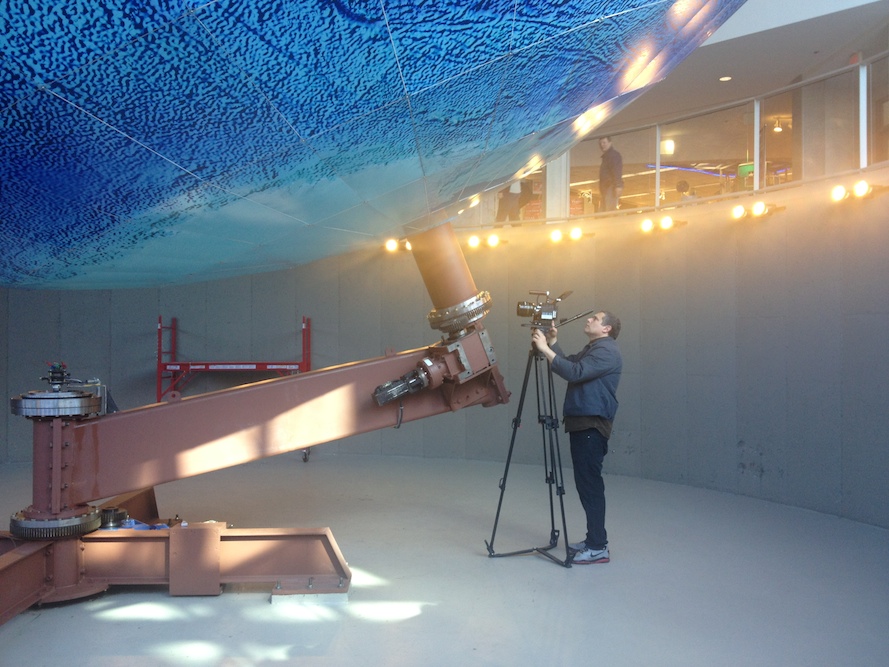
IAN: How much of the traditional documentary techniques remain in the new work? You’re traveling around filming interviews with your subjects, and those stories are what we empathize with in the film, yes, but I felt an emotional connection was really achieved through your narration, and especially through your use of a live score.
SAM: : It’s funny because the “Utopia in Four Movements” piece was the first live documentary film I did, and that had started off as a regular documentary. I was hit with this idea, “maybe I can do this as a live cinema piece” while I was editing it. So it really was a traditional film, I mean it was an experimental film that morphed into this live event. A lot of the constraints of filmmaking were still there. With traditional filmmaking, normally you don’t have a two and a half minute music break. Because people are sitting there in front of a computer and it’s too long. People want things to move faster. To me, the most interesting part of the form is the music — really big music and huge images washing over you — is a completely immersive experience. I’m trying to get as big as possible. In some ways film is getting as small as possible. You can watch it on your phone now. I want total arts spectacle. I think the interviews I feature are a little different. It’s sort of leaving more space for music and some talk. At first when I started that piece, I wanted to have no talking at all. Just have it all be visual. But there’s no way, it wouldn’t make any sense.
I can’t do it without the music. I need the music. You probably know this from theater. All this is new to me — I need the music to feel, so I can say the words in a sincere way, so it will mean something to people.
IAN: Have you developed a strict structure for these live documentaries or does it change with each piece?
SAM: Part of why I started doing this is because I’m interested in trying new things. So I don’t want to make another one that’s just the same. One thing I’ve thought about is why is the screen just a rectangle there? The only reason it’s a rectangle is for 100 years all the equipment we had could only make a rectangle there. Now we can do anything. With projection mapping, you can project onto anything. Literally the image in cinema has been liberated. And why not do something where you are projecting on the entire space. I don’t want to stray too far from film, so at a certain point you become installation, which I don’t want to do. But it’s something to think about. So I’m constantly trying to figure out how to push the form.
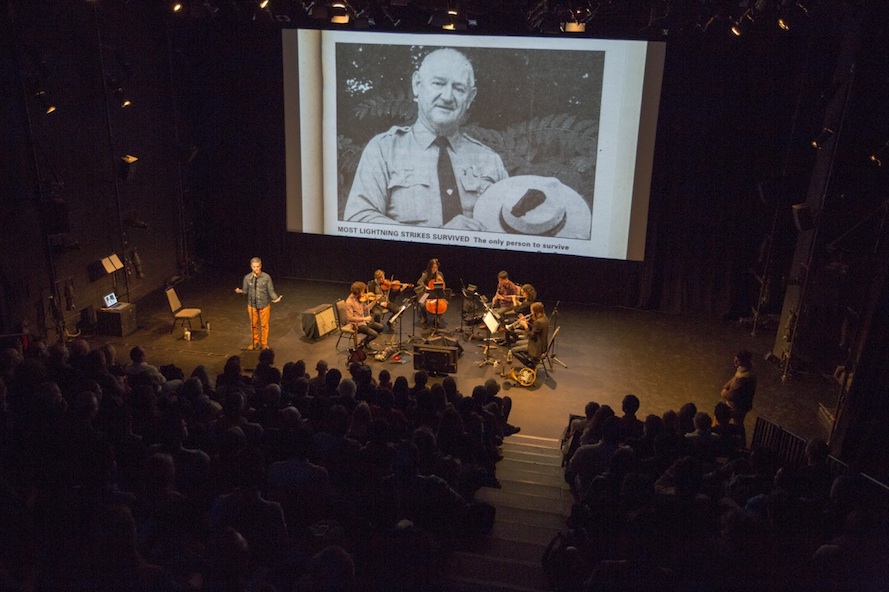
IAN: Do you ever think about pushing the live aspect a step further by including some of the subjects from the film in the live performance? To bring the world’s tallest man into the theater?
SAM: That’s an obvious, good question. The thing with that, I hate to say this, but deep down I’m uptight and controlling. And film suits me because you are basically totally controlling someone’s experience. I’ve gone through the interviews I’ve shot and meticulously and very carefully taken out the best parts. The parts that work. So to have someone come up on the stage and talk breaks my heart. Like I couldn’t turn the person off. I could say, “Here, say this.” But that defeats the purpose. I’m being half facetious here and half not, because the truth is a live interview, unless it’s long, doesn’t work that well because people don’t talk very well.
IAN: Are you working on anything right now?
SAM: The funny thing about these kinds of live cinema things I do is that they’re pretty fast to make or comparatively faster to put together. “The Measure of All Things” took me one year. For documentaries, that’s pretty unheard of. It usually takes three or four years. I work very hard and fast, but then the life after you put them out in the world is much longer. I’m still doing shows of the Buckminster Fuller piece, and that’s been three years. With a traditional film, after a year, people are like, “that one’s old.” A lot of my time is spent doing screenings, which I actually really love. But it’s a lot of travel, like being in a band.
IAN: Do you think you’ll only make live documentaries from here on out?
SAM: I go back and forth. I made a regular documentary about fog recently in San Francisco. And I don’t want to close the door on regular films. I’m very inspired on the live documentary front, but I still like regular films. There are things from “The Guinness Book of World Records” that I’d love to make into regular films. If I had all the money in the world, I’d make a long-term film about the oldest person in the world. Because it’s great. The oldest person in the world changes very often as you know. And whenever the oldest person dies, there’s all this media attention on the new oldest person. As long as the person can talk still, they ask the person, “What’s your secret?” And they all have some secret. One Japanese lady who was the oldest person a couple oldest people ago, said her secret was she drank one beer everyday. Or often it’s like, “I love God.” Or some weird inexplicable thing. Anyway, that would be a really great regular film to make.
Authors
-
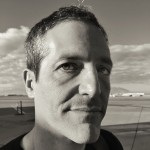
Sam Green is a New York-based documentary filmmaker. He received his Master’s Degree in Journalism from University of California Berkeley, where he studied documentary with acclaimed filmmaker Marlon Riggs. Green’s 2004 feature-length film, the Academy Award-nominated documentary "The Weather Underground," premiered at the Sundance Film Festival, was broadcast on PBS, and included in the Whitney Biennial. His most recent projects are the “live documentaries” "The Measure of All Things," (2014), "The Love Song of R. Buckminster Fuller" (with Yo La Tengo) (2012), and "Utopia in Four Movements" (2010). With all of these works, Green narrates the film in-person while musicians perform a live soundtrack. He is also a prolific maker of short documentaries and has received grants from the Creative Capital, Rockefeller and Guggenheim Foundations, as well as the National Endowment for the Arts.
-
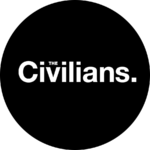
The Civilians is a company that creates new theater from creative investigations into the most vital questions of the present. Through a number of artistic programs, the Civilians advances theater as an engine of artistic innovation and strengthens the connections between theater and society. An artist-led company, the Civilians creates and produces new theater and pursues its artistic mission through programs serving artists and the public. The company’s work is grounded in investigative theater, an artistic practice rooted in the process of creative inquiry that brings artists into dynamic engagement with the subject of their work. Artists look outward in pursuit of a question, often engaging with individuals and communities in order to listen, make discoveries, and challenge habitual ways of knowing. The ethos of investigative theater extends into production, inviting audiences to be active participants in the inquiry before, during, and after the performance. Since its founding in 2001, the Obie Award-winning company has supported the creation of 14 original shows, and its work has been produced at many theaters in New York, nationally, and internationally. Last season saw two highly successful shows: "Mr. Burns: a Post-Electric Play" at Playwrights Horizons, which was included in eight Top 10 of 2013 Lists, and "The Great Immensity" at The Public Theater. The Civilians’ work has been published by Dramatists Play Service, Oberon Books, Ghostlight Records and Playscripts, Inc.



